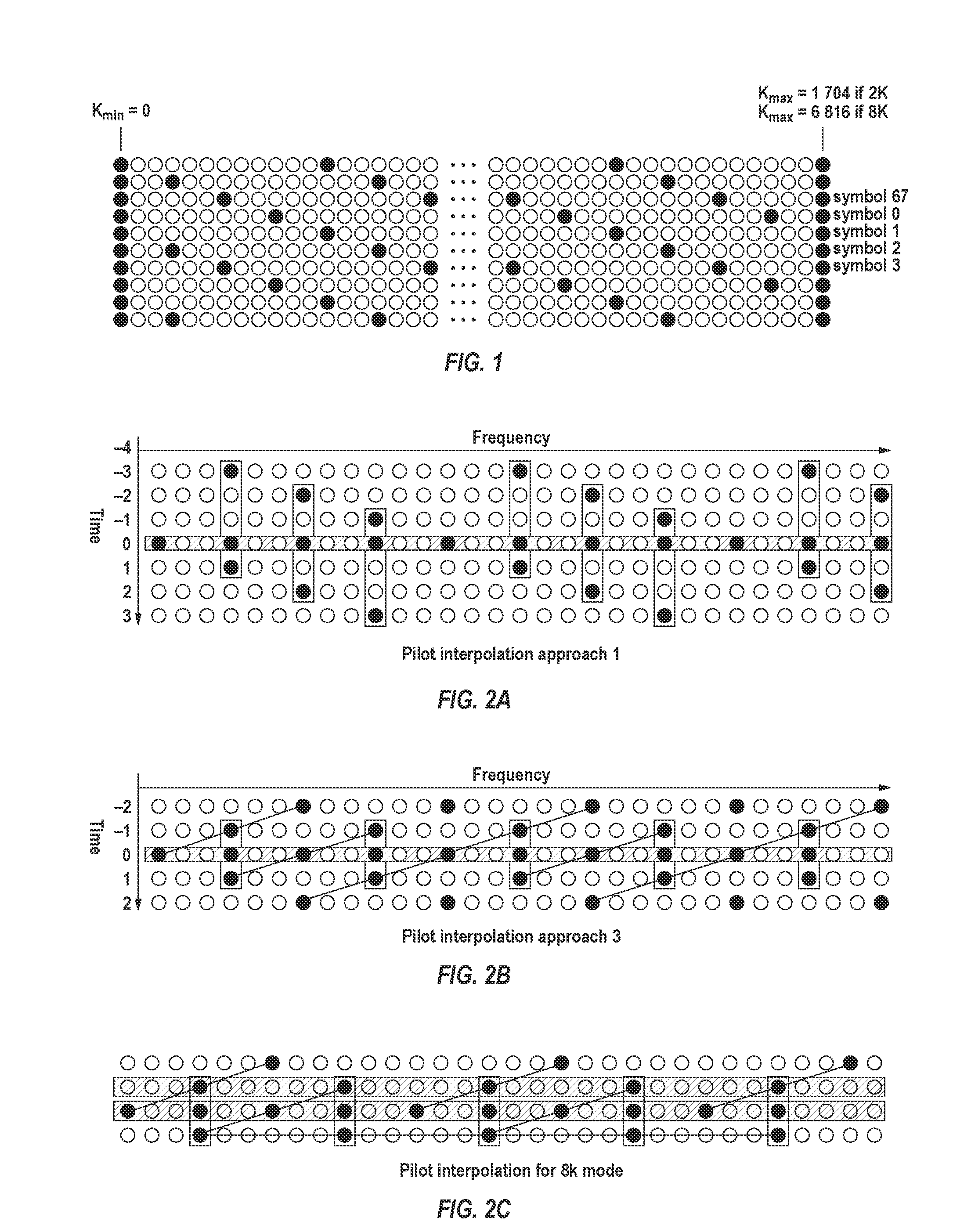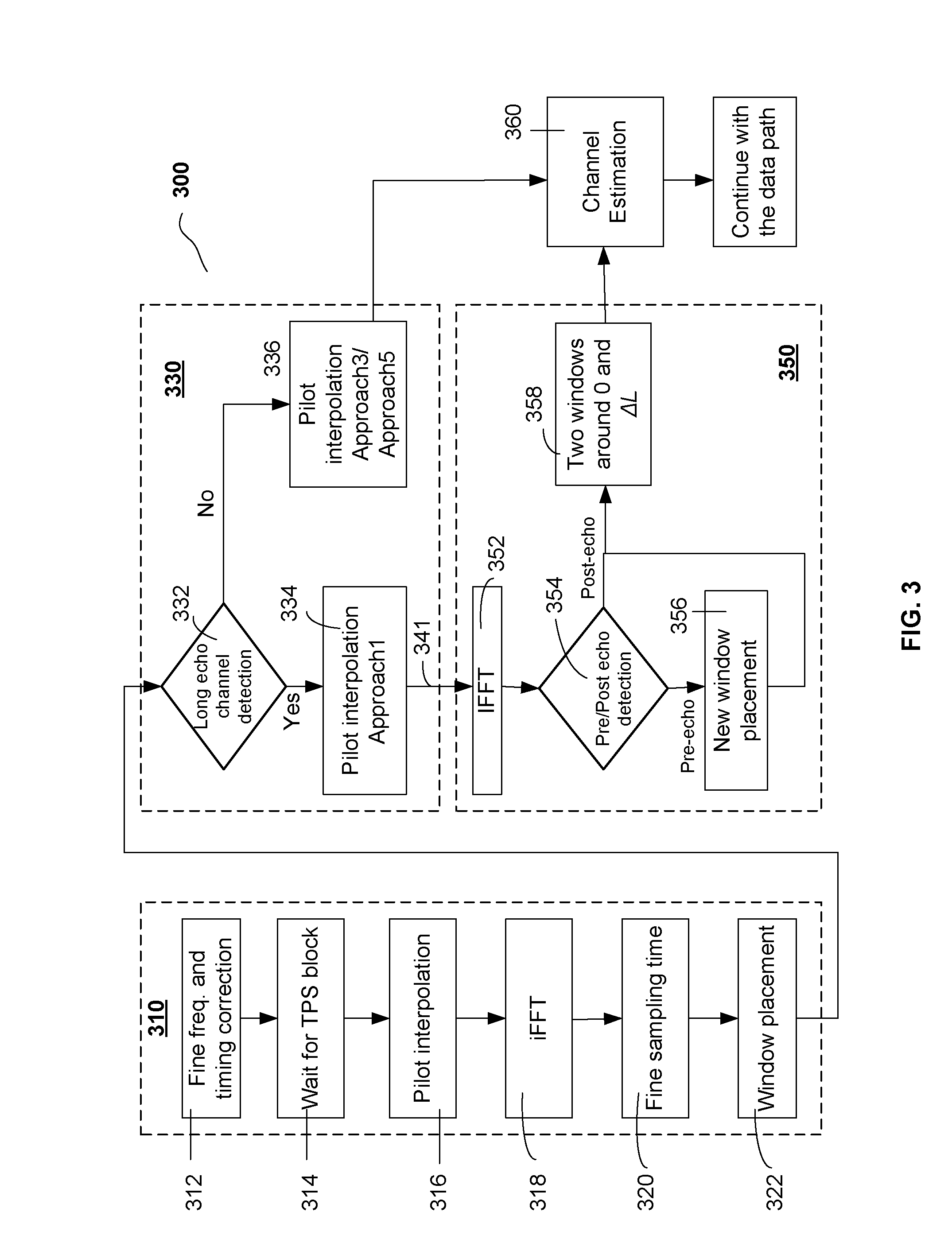Long echo detection and channel estimation for OFDM systems
a technology of channel estimation and long echo detection, applied in the field of long echo detection and channel estimation for ofdm systems, can solve problems such as subcarrier degradation, and achieve the effects of reducing noise, reducing noise, and capturing signal energy
- Summary
- Abstract
- Description
- Claims
- Application Information
AI Technical Summary
Benefits of technology
Problems solved by technology
Method used
Image
Examples
Embodiment Construction
[0017]In an OFDM receiver, channel estimation is performed in the frequency domain in the signal output from an FFT (Fast Fourier Transform) operation. Initial window placement provides desired samples for FFT which are approximately aligned to the symbols being transmitted. The symbol timing is subsequently estimated more accurately in a channel estimation block. Channel estimation can be performed in the frequency domain by using pilot tones distributed in a periodic fashion throughout the channel; these are transformed by an IFFT (inverse FFT) to yield the time-domain channel impulse response. Once this impulse response is calculated, a more precise window placement is possible so that timing errors introduced by intersymbol interference (ISI) can be removed.
[0018]In DVB-T systems, one in every twelve subcarriers is a pilot tone; the position of the pilot tones changes with each symbol as pilot tones are cycled through each subcarrier. The effective density of pilot tones can be ...
PUM
 Login to View More
Login to View More Abstract
Description
Claims
Application Information
 Login to View More
Login to View More - R&D
- Intellectual Property
- Life Sciences
- Materials
- Tech Scout
- Unparalleled Data Quality
- Higher Quality Content
- 60% Fewer Hallucinations
Browse by: Latest US Patents, China's latest patents, Technical Efficacy Thesaurus, Application Domain, Technology Topic, Popular Technical Reports.
© 2025 PatSnap. All rights reserved.Legal|Privacy policy|Modern Slavery Act Transparency Statement|Sitemap|About US| Contact US: help@patsnap.com



